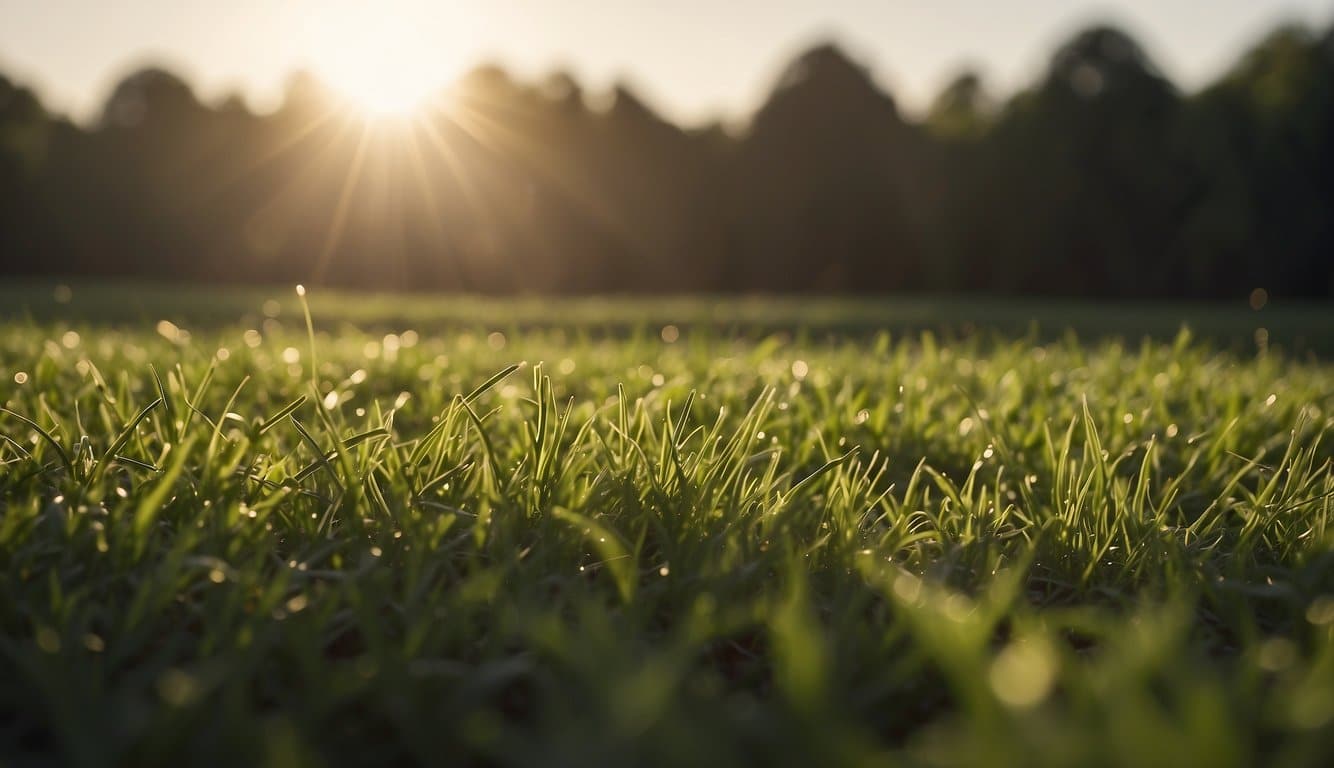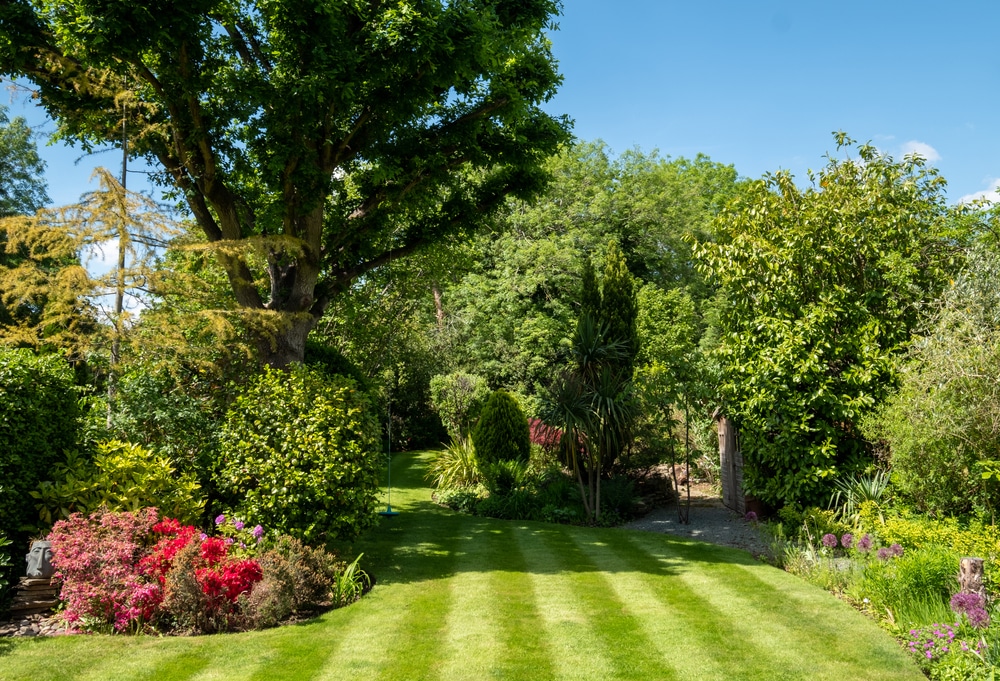Don’t like GMO’s? Neither do I. Let’s look at some grass seed varieties made as God intended them.
Understanding Non-GMO Grass Seed
When considering grass seed for your lawn, it’s important to recognize the options available.
Non-GMO grass seeds offer a natural choice, ensuring that the grass growing in your yard is as close to its original state as possible.
Definition and Importance
- Non-GMO Grass Seed refers to seeds that have not been genetically modified through biotechnology.
- Significance: Using such seeds means fostering an eco-friendly environment without the uncertainty that comes with genetic alterations.
Regulations and Certifications
- Regulatory Oversight: Non-GMO grass seeds are subject to laws that vary by country and region, ensuring their non-modified status.
- Certification Marks: Look for seals like the Non-GMO Project Verified on packaging, which confirm adherence to standardized non-GMO practices.
Types of Non-GMO Grass Seed
When choosing non-GMO grass seed for your lawn, it’s essential to consider the climate of your area as well as the specific characteristics of each seed variety.
These seeds come without genetic modifications and can be found in cool-season, warm-season, and blended varieties to suit various environmental conditions.
Cool-Season Varieties
- Perennial Ryegrass: Known for its rapid germination, perennial ryegrass establishes quickly and endures cooler temperatures well.
- Kentucky Bluegrass: This type boasts a rich green color and high tolerance to cold, making it a favorite for northern climates.
- Fine Fescue: If your yard doesn’t get full sun, fine fescues like Creeping Red Fescue offer the shade tolerance you need.
For a lush lawn even as the temperature drops, consider integrating these cool-season grass seeds into your yard planning.
Warm-Season Varieties
- Bermuda Grass: Resilient in the heat, Bermuda Grass thrives in southern landscapes and handles drought conditions well.
- Zoysia Grass: With a dense growth pattern, Zoysia is praised for its ability to resist weeds and wear in warmer regions.
- Buffalo Grass: An excellent choice if you’re looking for minimal maintenance and water usage; Buffalo Grass loves the heat.
Explore non-GMO grass seed options suitable for warm-season planting.
Blended Seed Options
- Herbal Lawn Mixes: These blends combine grasses with herbs for a unique, fragrant, and eco-friendly lawn.
- Meadow Mixes: Perfect for creating a natural and wildlife-friendly area, these mixes feature a variety of grasses that flourish together.
- Eco-Friendly Mixes: Aimed at water conservation and sustainability, these blends include grasses that require less watering.
Blended seeds can be tailored to your specific environmental and aesthetic needs; they often include both cool- and warm-season species for year-round growth and adaptability. Consider peaceful valley seed mixes for a diverse and robust lawn.
Selecting the Right Non-GMO Grass Seed
When choosing non-GMO grass seed for your lawn, it’s essential to consider your local climate, soil quality, and the amount of sunlight your yard receives.
Assessing Your Climate Zone
- Determine your USDA Hardiness Zone: This helps you understand which grass species will thrive in your region’s temperature extremes. A zone-appropriate variety ensures better growth and sustainability.
- Consider your regional weather patterns: If you live in an area with frequent droughts, look for drought-resistant non-GMO grass seed options that can survive with minimal watering.
Soil Preparation and Requirements
- Test your soil pH: Grass seed performs best in soil with a pH between 6.0 and 7.0. Amend your soil as necessary before seeding.
- Ensure good soil drainage: Compact soil can inhibit root growth. Aerate your lawn if the soil is too dense to allow for oxygen and nutrient penetration.
Shade Tolerance and Sun Exposure
- Evaluate the daily sunlight exposure your lawn area receives. Full sun, partial shade, or full shade each have their suited grass varieties.
- Research grass seed blends with appropriate shade tolerance—fine fescues, for instance, perform well in shadier areas, as mentioned by Pennington.
Planting and Maintenance Strategies
Proper planting and ongoing care are crucial for establishing a thriving, sustainable lawn with non-GMO grass seed. These strategies will help ensure robust growth and a healthy lawn.
Seeding Techniques
- Prepare the Soil: First, prepare your soil by removing weeds, rocks, and debris. Loosen the top 2 to 3 inches of soil and level it out to create an even surface.
- Choose the Right Seed: Opt for a grass seed mix that suits your climate and usage needs, taking into consideration factors like sunlight and foot traffic. Consult Main Street Seed and Supply for a diverse selection of non-GMO seeds.
- Sow Evenly: Use a spreader to ensure an even distribution of seeds across the prepared soil. Follow the seed rate recommendations on the package.
- Cover Lightly: Gently rake the area to cover seeds with a thin layer of soil, no more than 1/4 inch deep.
Watering and Fertilization
- Regular Watering: Initial watering should be light and frequent to keep the top inch of soil consistently moist until germination occurs. Afterward, reduce frequency but increase depth to encourage deep root growth.
- Fertilization Schedule: Apply a starter fertilizer at the time of seeding and continue with regular feedings using organic or slow-release fertilizers. This helps to establish a lush lawn.
Frequently Asked Questions
This section addresses common queries regarding the selection, planting, and maintenance of non-GMO grass seed, providing you with practical advice for optimizing lawn health and appearance.
What considerations should be taken into account when selecting non-GMO grass seed?
When choosing non-GMO grass seed, you should consider:
- Seed adaptability to your local climate
- Resistance to diseases and pests specific to your area
- The purpose of your lawn—whether it’s for aesthetic, play, or erosion control
What is the optimal planting season for non-GMO grass seed in various US regions?
Optimal planting times for non-GMO grass seed:
- Northern US: Late summer to early fall
- Southern US: Early spring or early fall, depending on the grass type
What are the best practices for sowing non-GMO grass seed on existing lawns?
For sowing non-GMO grass seed on existing lawns:
- Mow your existing lawn short and remove clippings to prepare the soil bed.
- Use a rake to loosen the soil and create a good seed-to-soil contact for the new seeds.
How should non-GMO grass seed be spread in the absence of a mechanical spreader?
If you don’t have a mechanical spreader:
- Create a makeshift spreader using a can with holes poked in the lid.
- Disperse the seed by hand, walking in a consistent pattern to ensure even coverage.
What is the recommended procedure for planting non-GMO grass seed on compact soil?
To plant non-GMO grass seed on compact soil:
- Aerate the soil using a fork or core aerator to alleviate compaction.
- Follow up with a thin layer of compost or topsoil to encourage germination.
Which weather conditions should be avoided when planting non-GMO grass seed?
Avoid sowing non-GMO grass seed during:
- Periods of excessive heat or cold
- Predictable heavy rains that may wash away the seeds
Last update on 2024-04-29 / Affiliate links / Images from Amazon Product Advertising API





